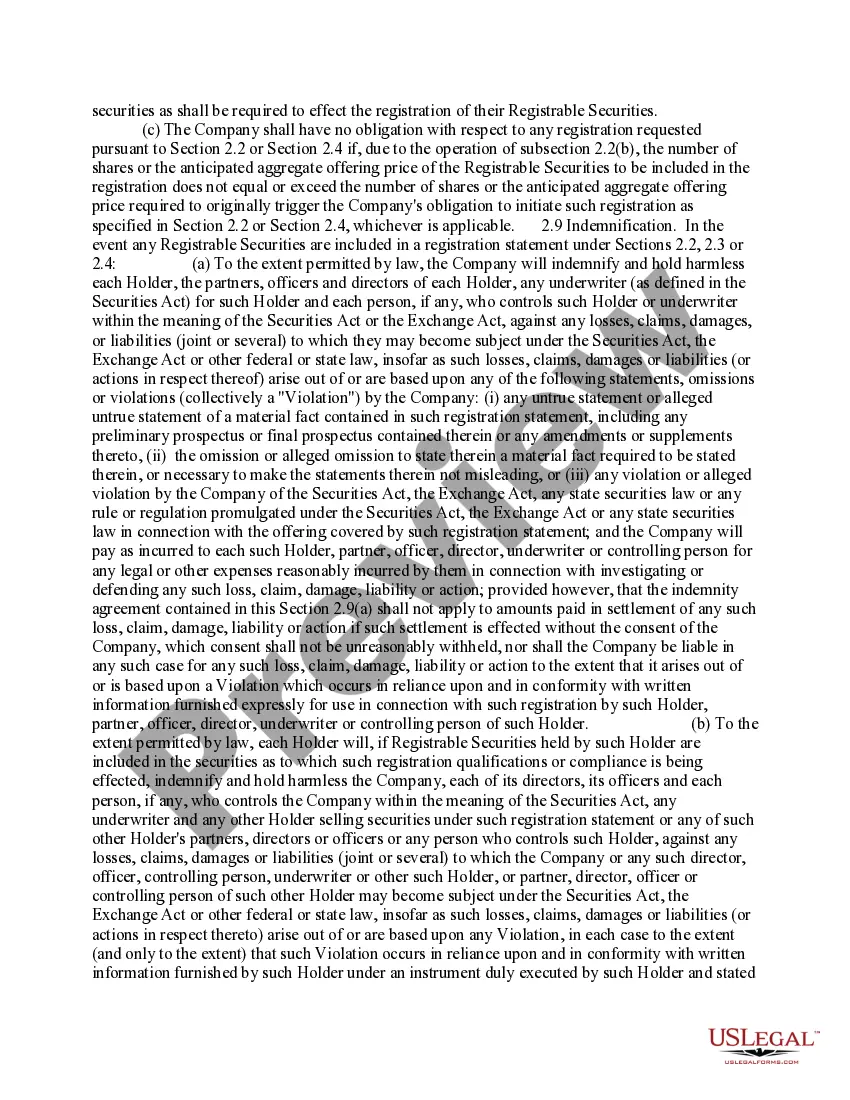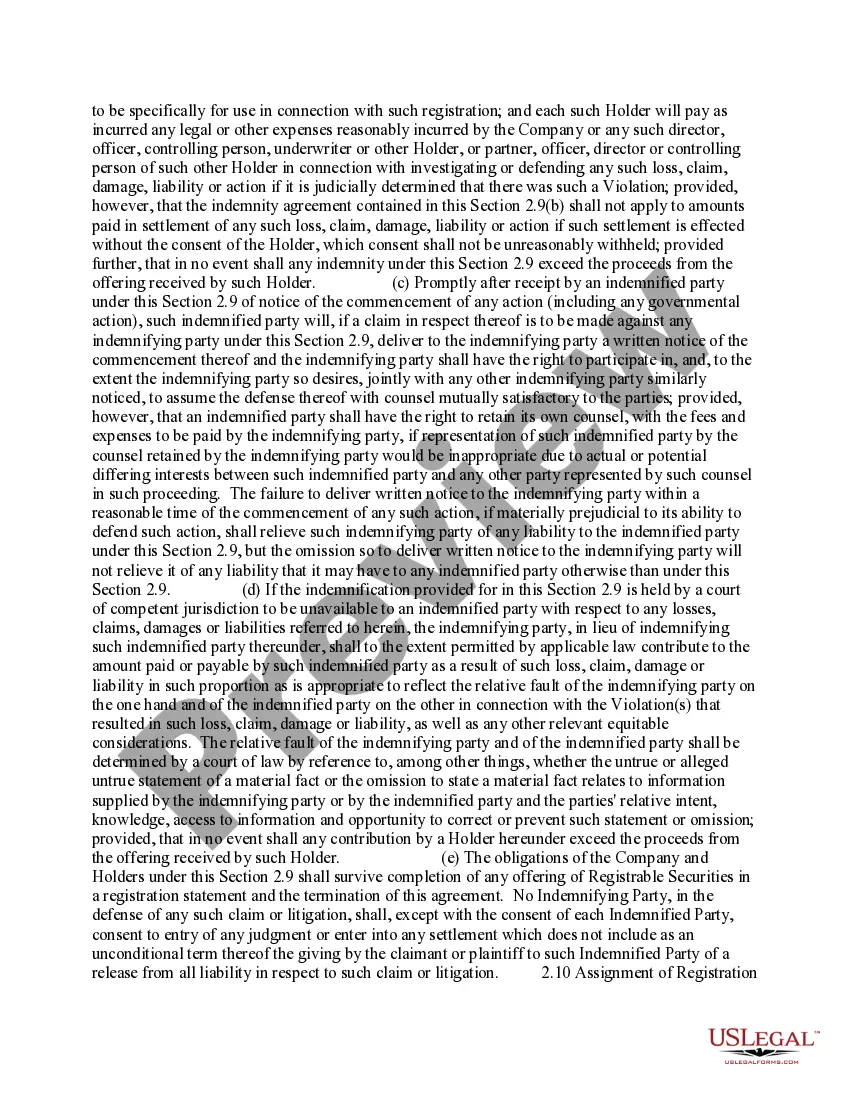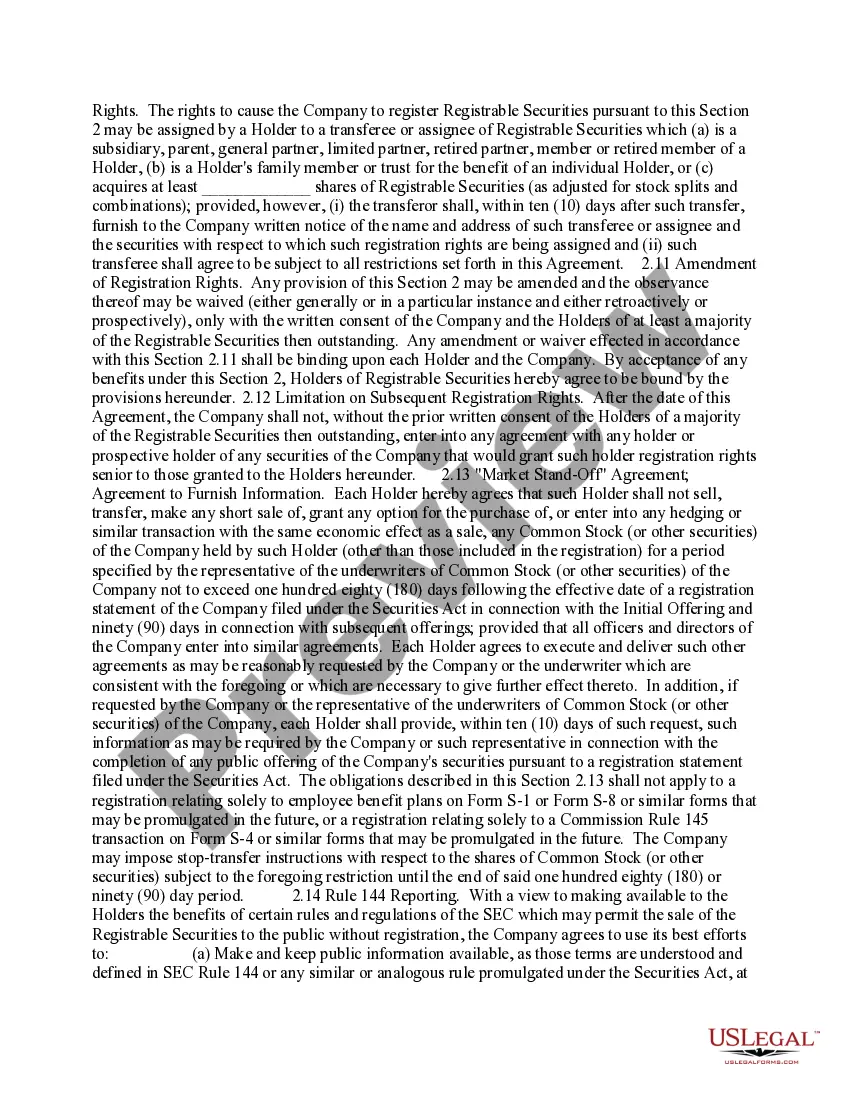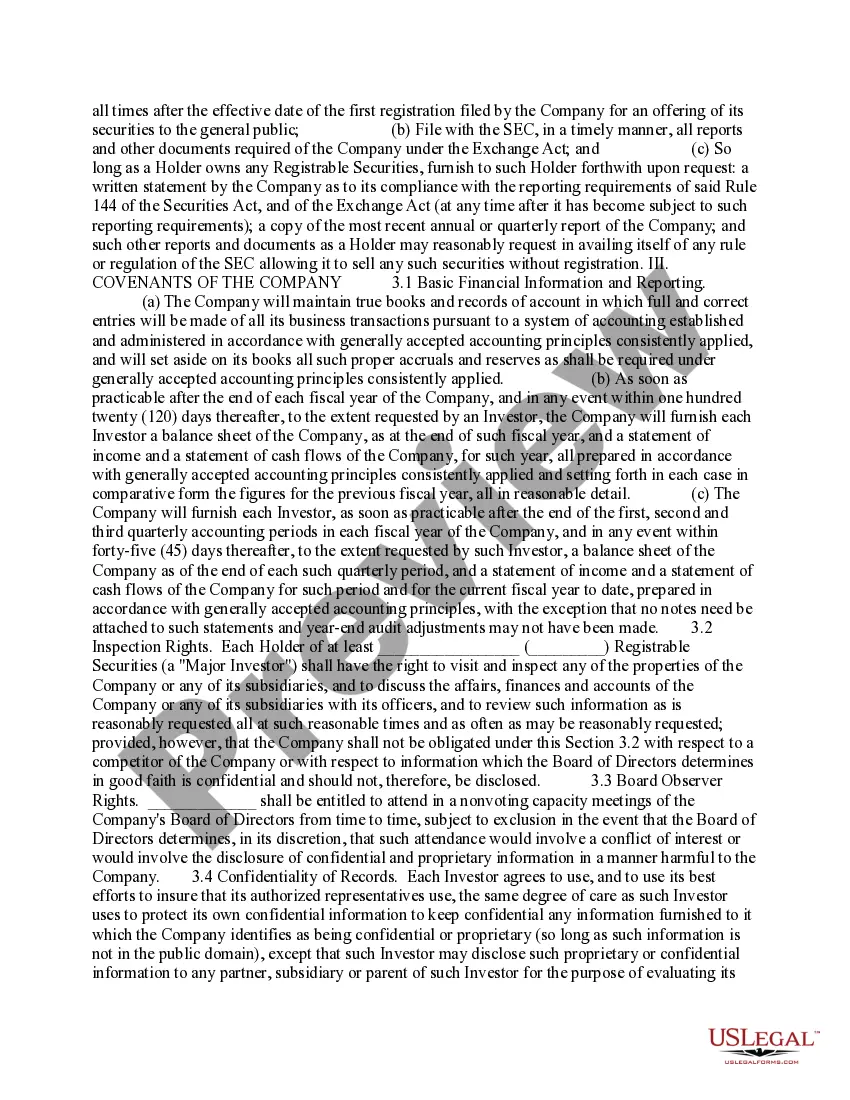This is an Investor Rights Agreement between the purchasers of preferred stock and the corporation issuing the stock. It contains restrictions on transfer, obligations of the company, indemnification clauses, covenants, and other applicable provisions of such an agreement.
An Oregon Investor Rights Agreement is a legally binding contract designed to protect the rights and interests of investors involved in various financial transactions within the state of Oregon. This agreement outlines the specific rights, responsibilities, and obligations of all parties involved, aiming to provide transparency and ensure fair treatment. The primary purpose of an Oregon Investor Rights Agreement is to establish a framework that governs the relationship between the investor and the company seeking investments. It includes provisions that safeguard the investor from any potential fraudulent activities, misrepresentations, or unfair treatment by the issuing company. Within the Oregon Investor Rights Agreement, there may be various types based on the nature and purpose of the investment. Some different types of Oregon Investor Rights Agreements include: 1. Equity Investor Rights Agreement: This agreement is commonly used when an investor provides capital to a company in exchange for equity ownership, such as shares or stocks. It outlines the investor's rights regarding voting, information access, preemptive rights to maintain ownership percentage, and restrictions on dilution of ownership. 2. Debt Investor Rights Agreement: In cases where an investor provides funds to a company as a loan, a Debt Investor Rights Agreement comes into play. It governs the terms of the loan, including interest rates, repayment schedules, and priority in case of bankruptcy or liquidation. 3. Convertible Investor Rights Agreement: This type of agreement applies when an investor provides capital under the condition that it can later convert into equity ownership. It outlines the conversion terms, such as conversion price, conversion ratio, and other terms related to the conversion process. 4. Preferred Investor Rights Agreement: Investors sometimes negotiate additional rights and preferences as part of their investment. A Preferred Investor Rights Agreement spells out the specific preferences and privileges given to preferred shareholders, such as liquidation preferences, dividend entitlements, and anti-dilution provisions. 5. Regulated Investor Rights Agreement: Certain investments in Oregon may require compliance with specific regulations, such as securities laws or industry-specific regulations. A Regulated Investor Rights Agreement ensures that both the investor and the issuing company adhere to these regulatory requirements and avoid any legal violations. These various types of Oregon Investor Rights Agreements aim to establish a fair and secure investment environment for all parties involved. By clearly defining the rights, responsibilities, and obligations of investors, these agreements promote trust, transparency, and accountability in Oregon's financial landscape.An Oregon Investor Rights Agreement is a legally binding contract designed to protect the rights and interests of investors involved in various financial transactions within the state of Oregon. This agreement outlines the specific rights, responsibilities, and obligations of all parties involved, aiming to provide transparency and ensure fair treatment. The primary purpose of an Oregon Investor Rights Agreement is to establish a framework that governs the relationship between the investor and the company seeking investments. It includes provisions that safeguard the investor from any potential fraudulent activities, misrepresentations, or unfair treatment by the issuing company. Within the Oregon Investor Rights Agreement, there may be various types based on the nature and purpose of the investment. Some different types of Oregon Investor Rights Agreements include: 1. Equity Investor Rights Agreement: This agreement is commonly used when an investor provides capital to a company in exchange for equity ownership, such as shares or stocks. It outlines the investor's rights regarding voting, information access, preemptive rights to maintain ownership percentage, and restrictions on dilution of ownership. 2. Debt Investor Rights Agreement: In cases where an investor provides funds to a company as a loan, a Debt Investor Rights Agreement comes into play. It governs the terms of the loan, including interest rates, repayment schedules, and priority in case of bankruptcy or liquidation. 3. Convertible Investor Rights Agreement: This type of agreement applies when an investor provides capital under the condition that it can later convert into equity ownership. It outlines the conversion terms, such as conversion price, conversion ratio, and other terms related to the conversion process. 4. Preferred Investor Rights Agreement: Investors sometimes negotiate additional rights and preferences as part of their investment. A Preferred Investor Rights Agreement spells out the specific preferences and privileges given to preferred shareholders, such as liquidation preferences, dividend entitlements, and anti-dilution provisions. 5. Regulated Investor Rights Agreement: Certain investments in Oregon may require compliance with specific regulations, such as securities laws or industry-specific regulations. A Regulated Investor Rights Agreement ensures that both the investor and the issuing company adhere to these regulatory requirements and avoid any legal violations. These various types of Oregon Investor Rights Agreements aim to establish a fair and secure investment environment for all parties involved. By clearly defining the rights, responsibilities, and obligations of investors, these agreements promote trust, transparency, and accountability in Oregon's financial landscape.











